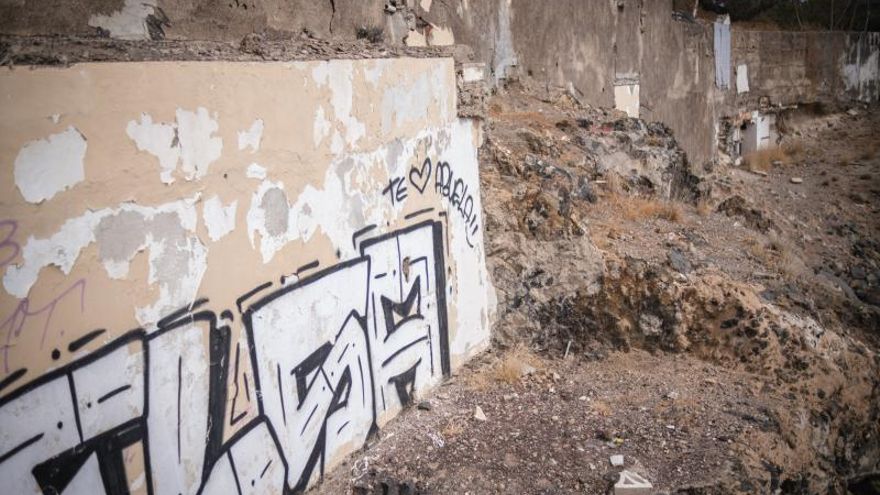
On March 4, 1998, the Official Gazette of the Canary Islands (BOC) publishes the collaboration agreement between the Ministry of the Environment and the Government of the Canary Islands for actions in infrastructures, the list of which appeared in the BOC edition of the 28th of that same month. Number 47 on the list was promenade and demolition project in Cho Vito. Today the promenade is built, but it barely has users because it dies on the walls of the Las Caletillas power plant. To create it, the state destroyed Cho Vito nine years ago.
At 9:56 a.m. on Friday, November 16, 2012, a shovel began to demolish the home of Tomás González and his family, the last symbol of Cho Vito. It was the first of the nine houses that were left standing in the fishing village four years earlier, after an intervention that was intended to be an example of what would happen to the rest of the country’s enclaves located in the maritime-terrestrial public domain. But the excess had the opposite effect.
On April 17, 2005, residents discovered that Candelaria’s General Management Plan (PGO) project includes the so-called Schedule A15, document proposing the demolition of Cho Vito. Then began a fight that has not ended. The definitive intervention, that of nine years ago, is awaiting the pronouncement of the Provincial Court in the process opened by the complaint of those affected against the Government delegate, María del Carmen Hernández Bento, and the subdelegate in Santa Cruz de Tenerife , Guillermo Díaz Guerra. “We believe that fundamental rights were violated because, among other things, they threw us out of our houses and knocked them down without there being any judicial decision to guarantee entry into our homes,” Tomás González complains.
Something similar occurs with the intervention of October 7, 2008, when 23 of the 31 houses that made up Cho Vito were demolished. “The courts have not said the last word in that case either. For a long time that passes, this does not expire and one day we hope for justice.
Occasionally
Filiberto, Marta, David, Miguel, Davinia, Tomás … They are among the last names of Cho Vito. The place, today turned into quiet, loneliness, shit and a walk to nowhere, It is not a place frequented by those who made that town a place to live. “We see each other from time to time, we consult each other, but the covid has been a brake. I think I have been there four times in this time. I do not want to get back. It is very hard and very sad what happened and why it was done.
Tomás González was the natural leader of the neighborhood movement and who led what was defined asor “the spirit of Cho Vito.” A phrase that symbolizes the struggle of a group of people in defense of their homes, despite the existence of some sentences, and that today “remains in force.” For professional reasons, González is in La Palma, where the General Directorate of the Coast and the Sea undertakes some processes to recover the maritime-terrestrial public domain. This is the case of El Faro, La Zamora and Puntalarga, in the Fuencaliente municipality. “Our example serves to help and guide those who now find themselves in our same difficulty.” “I don’t want our thing to be repeated anywhere in the Canary Islands,” he reflects.
The last one was Lolita’s
“We were an example of unity, solidarity and work, but what remains is injustice,” recalls Tomás González, who with a certain melancholy continues to point out that “no one has asked us for forgiveness, but we continue to wait for someone to do so.”
Cho Vito finished disappearing when Lolita’s house fell, the furthest from the entrances to the town. Nine years later, Tomás González points out: «Let it be clear. Costas came to Cho Vito because Candelaria went to look for her »
A similar problem remains to be solved a few meters from where Cho Vito was, on the other side of the power station. Costas has reactivated the file for the recovery of public domain space in Bajo la Cuesta. Danger.
















